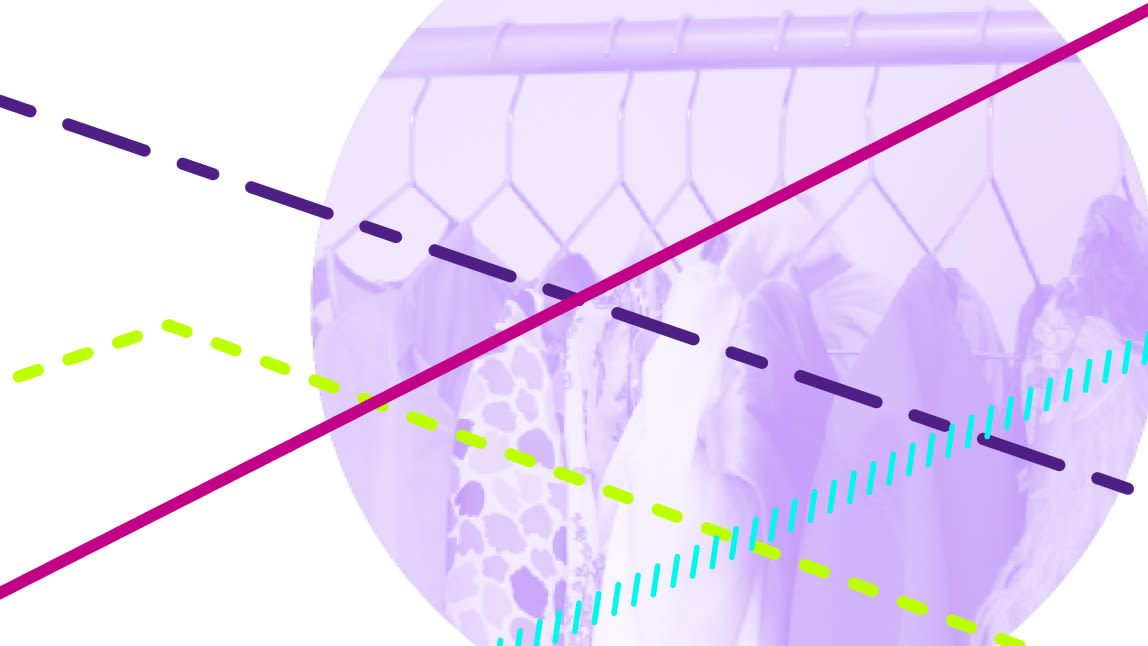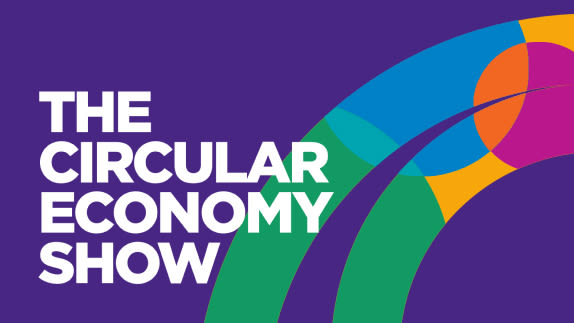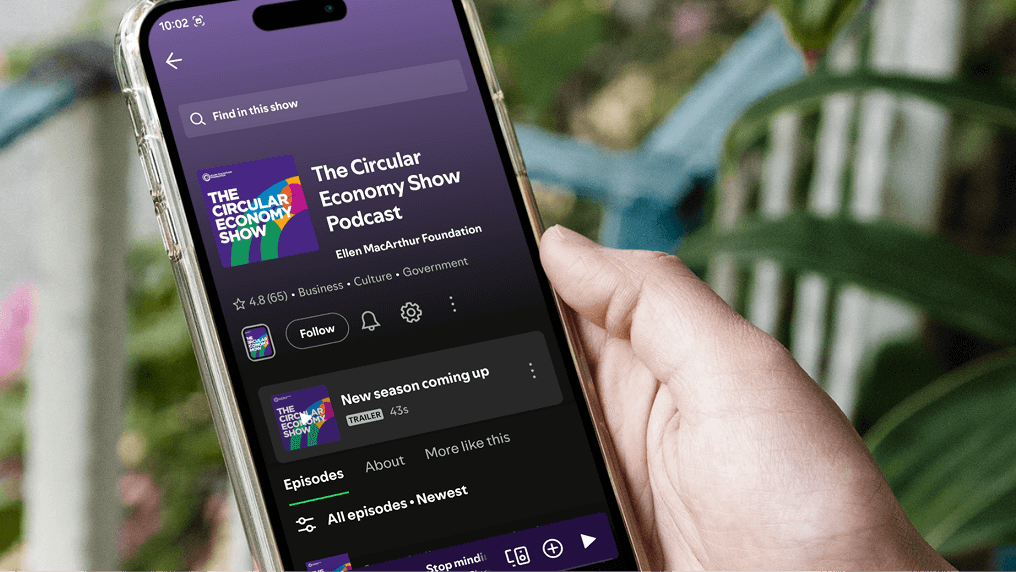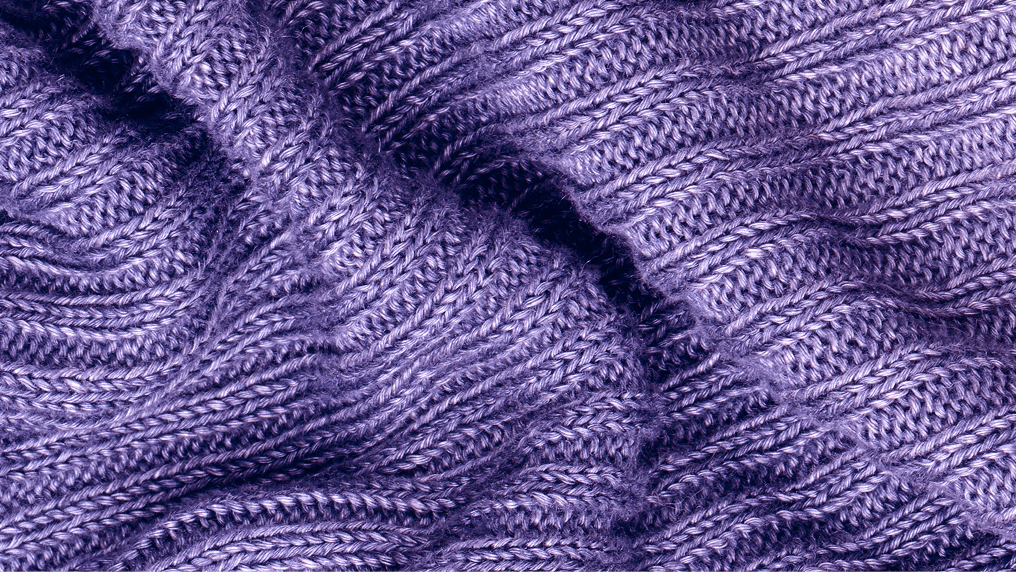Welcome to our new fashion series, where we'll meet three companies working towards a circular economy for fashion. In this first episode, we visit Europe's largest circular fashion hub, Advanced Clothing Solutions (ACS).
Listen on Spotify, Apple Podcasts, or wherever you get your podcast.
Transcript
Seb Read 0:03
Welcome to the Circular Economy Show Podcast and our new fashion series, where we're meeting three companies working towards a circular economy for fashion. That means creating better products and services for customers, contributing to a resilient and thriving fashion industry and regenerating the environment. I'm Seb, and in today's episode, I visit Europe's largest circular fashion hub, Advanced Clothing Solutions or ACS, where they help businesses to make money without making new clothes through rental, resale and recommerce. I'll be walking the warehouse floor and find out what's behind resale subscription models. And I first started by asking ACS' CEO, Andrew Rough, what they exactly do.
Andrew Rough 0:47
ACS or advanced clothing solutions started over 25 years ago, it started off as a menswear rental company, founders of the business bought Highland wear inventory, so kilts, sporrans, waist coats, jackets, they would rent those out to retailers, and then the retailers would then rent those out to the end user. And then it's really evolved from there. It's always been involved in circular fashion solutions. We were involved in circular business before people were talking about circularity.
Andrew Rough 1:22
And the fundamental DNA of the business is garment longevity. And because once you make the investment in the inventory, you want to get as high utilisation of that inventory as possible. So the company has evolved until 2018, we were managing all our own inventory. But we really saw there was an opportunity for us to help fashion brands and retailers to enable and get their foot in the door of circular fashion. So we started managing their inventory on their behalf. So that really allowed lots of fashion brands to be able to offer circular solutions quickly because we have a fantastic facility here. It's certainly the best of its kind in Europe. And we offer lots of different circular solutions, whether that is rental, or whether that's resale pre-loved, or whether that's recommerce.
Seb Read 2:21
ACS has been on a journey from a kilt rental business to facilitating clothing longevity through various models and for all kinds of clothing. But more than that, ACS is leveraging its experience to skill its team, and technologies to provide ready made infrastructure to support brands in bringing these business models to life.
Andrew Rough 2:40
We've got a fantastic team, we've got a great intellectual property. And that's basically the knowledge that our team carries, because they've been brought up fundamentally, in making clothes look really good for a wedding, because that was primarily what we used to service, was the wedding industry. So that ethos runs through the organisation. And we take that ethos to allow brands, because it's very important, we are a partner. We don't want our brand to have any negative reputation. We're very much here about improving the reputation of our brands. By partnering with ACS, a brand can be very assured that we are improving their sustainability credentials. For example, we are a B Corp. And we've got one of the the 10 highest score in the UK. And if you think about what we fundamentally do, which is cleaning clothes, which involves the use of water, and chemicals, utilities, then that's a really proud achievement to reach the score that we achieved at becoming a B Corp. So that therefore allows brands to get a lot of comfort that by partnering with ACS, that we're going to improve their reputation.
Seb Read 4:02
Having spent time in the facility, it's clear that the skills of the team are a huge part of their impact. I want to know a little bit more about Andrew and how he ended up at ACS.
Andrew Rough 4:13
For me personally, I joined at the end of 2009. It was quite a big change in my career path because before joining ACS, I had worked for large organisations, some of which were publicly listed companies. I joined at the time as CFO and I recognised there was a great opportunity to join a business that was wanting to grow and really make a change. It was quite it was quite an interesting career path. We were a privately owned business when I joined. We took on private equity funding, we did an international expansion. We bought a couple of companies. So it's been a really exciting time from that perspective, and then I became CEO. And when I became CEO, I really felt there was an opportunity for us to really expand the services that we we offer. I work with a fantastic team, we've got a really good exec team, some of the exec team who have been here longer than I have, we've got new members of the exec team. And that's been really good as well. Because you always want to recruit people that are better than you are, you want people that will come in and challenge you. And I feel now we've got a really good exec team.
Seb Read 5:33
It might be tempting to assume here, the big opportunity is environmental, that Andrew was keen to emphasise otherwise. So why is it so important to start with the economics? And how does ACS do this?
Andrew Rough 5:45
It's a very different dynamic to the traditional linear model. Because it's all about asset utilisation. It's changing clothing from being a current asset or inventory to actually thinking of it as a fixed asset. And having many uses over its lifetime. Once you get past the rental position of five to six rentals is more profitable than the traditional linear model. Now five to six rentals might sound a lot. But when I tell you that we've rented out some dresses over 30 times, we've rented some trousers nearly up to 100 times, then that shows you the opportunity that there is on the rental platform, then if we look at resale and pre loved, we are working with garments that are sent to us by brands that are potentially being damaged or need repair, we can clean them, we can then then offer them to the next user of that garment. And the beauty of the pre loved area is that is growing really, really quickly. Traditionally, when people were falling out of love with a fashion item, which happens, then they would probably sell it on a marketplace. The brand isn't benefiting at all from that transaction. So some of the brands that we're working with have takeback schemes, for example. So they are receiving an item back from the end user that comes to us, we clean it, repair it, then we sell it on a platform. And so the brand has benefited from that transaction. And then they've also benefited from the transaction where they're providing credit note to the person that's returned the original item. So they're getting so much access to secondary income, while previously they wouldn't have received any access to that income. So there's two very clear examples there both from rental and resale, that are hugely more profitable than the traditional routes to follow. Then if you look at a recommerce model, which is very much focused on working and helping with brands with the issues of returns, because we're actually Advanced Clothing Solutions we're the polar opposite of brands, because we love returns. If you think about our rental model, we send out 3 million items a year, but we want to get those 3 million items back. So we're processing 6 million items a year. brands don't like returns. But the the issue that they have is that returns exist. They're a fundamental part, not only your bricks and mortar, retail, but also ecommerce, a lot of those returns that come back are damaged. And they're potentially not being able to be able to be sold in their current condition. So therefore they get sent to us, we're able to clean them, repair them, and then they are able to be sold. So we are eliminating a problem that a brand is facing on an increasing level.
Seb Read 9:04
After hearing a bit about the why, and the what of ACS, I was very keen to see a bit more of the how. So Andrew and I went down to the warehouse floor to see their work and action. This is a facility that sees more than 3 million items of clothing run through it per year. We're an automated system enabled by RFID technology responds to new orders automatically. The scale of the operation was genuinely impressive and hints of what might be possible. We stopped by a couple of the specific stations to find out more about their brand collaborations.
Seb Read 9:37
Andrew so I understand this is one of your latest brand collaborations.
Andrew Rough 9:40
Yeah, very much. So we're working with North Face and it's a really exciting opportunity for us at Advanced Clothing Solutions. Just to give you an example of kind of work that we do, that is the normal zip on the jacket. When we received this jacket, the zip was broken on this side aid. So rather than discard that jacket, we actually removed the zip. So therefore, you have an open pocket. And our plan is to remove the zip on that side. So you have matching open pocket there as well, we could actually insert a press stud there as well. So you have a press dot there and a pastor there. So then that can then be sold to a next user of that jacket. So we are converting a jacket, which has got a problem and hard for North Face to sale sale. And we're converting it into another asset that can then be sold to someone else.
Andrew Rough 10:00
So it's like a renew redesign of the clothing.
Andrew Rough 10:37
Exactly, very much so. So it's not just about repair. But it's about the team thinking about how we can change the jacket, to make it be able to be used as many times as possible.
Seb Read 10:48
And at what scale? Will you think about something like this? Is it every single individual piece you look at? And you're like, Alright, how can we get that into a new programme? Are you trying to find like patterns that allow you to say, well, actually, removing zip from pockets is a useful thing for us to do.
Andrew Rough 11:03
it's a mixture of what... we very much don't know what we're going to receive. So we received the garments from from the brand. And then we worked through the garments that we received, and our skilled technicians will be able to identify which items can be turned around quickly, which other items might need a bit of extra work. And then we need to check the commercial reality of whether it's worthwhile working on the garment to solve that problem.
Seb Read 11:28
I understand the programme that North Face are running here is that scale, relatively big scale already in the US and you are going to be their delivery partner for it in the UK.
Andrew Rough 11:39
Yeah, very much so. It's really exciting, because it's already tried and tested in the US. And they're really pleased with how the programme is running in the US. We're now partnering with them in the UK. And once we get that up and running, then there's no reason why we don't expand that into mainland Europe as well. So it's really exciting.
Seb Read 11:55
We're going to have another repairs to show.
Andrew Rough 11:57
Yeah, very much so. So, here's another repair here a jacket that's come in, you can see there's a clear rip there above the jack above the pocket there, we'll be able to repair that and it looks like new.
Seb Read 12:09
Just sew it up.
Andrew Rough 12:09
Yeah, just sew it up. Or alternatively, here's another one here, where there's obviously been a rip in this panel, it's been covered up with taping. But what we would do would remove that and be able to replace that panel altogether. So it looks again, nearly like new.
Seb Read 12:27
And again, how bespoke is that to North Face? Is that something that you're looking at, you know, it's part of puffer jackets, and the specialty of ACS?
Andrew Rough 12:37
Again, it's not just our speciality, it's just a way that we've adapted to be able to take the underlining ethos of garment longevity, and working on different garments. But it's certainly not unique to North Face, as you know, lots of different brands have puffer jackets, outdoor garments. So what we're able to demonstrate is that we can work with this brand. And there's no reason why we shouldn't be able to work with other brands, who want to have a renewed programme.
Seb Read 13:03
And it's the craft of your team to be able to spot and, you know, develop those individual kind of longevity solutions.
Andrew Rough 13:09
Yeah, very much so. So again, they're very of the mindset of, Let's reuse as garments as many times as possible, what do we need to do to the garment to be able to facilitate that?
Seb Read 13:22
So Andrew, what are we looking at here?
Andrew Rough 13:23
yeah, basically what we're working with one of our partners is a clothing subscription service, where as the end user of the clothes can build a virtual wardrobe of items. So they stock up their wardrobe, then they get sent to pieces. And they can hold on to those two pieces for as long as they would like. If they return one item of clothing, then they would automatically get sent another piece from their virtual wardrobe. So a person is getting access to a significant amount of clothing, but never needing to purchase the items. The beauty of that is you're rotating that rotating the assets, you're rotating the clothing items, someone will wear it, they'll return it, and then it's used by someone else. So you're cutting down on the amount of usage or manufacture of clothing. But people are still having access to a virtual wardrobe. In addition to that, in these days of high cost of living crisis, people are getting access to clothes that they couldn't necessarily afford by paying for a rental service. So it's a win win, because the brand is benefiting from it from a commercial perspective, because it's all about asset utilisation. The assets that we have for garments, which are through everyday subscription are the ones that have the highest utilisation rate, because rental has been very much associated with one off events or weddings, but it doesn't need to be that...
Seb Read 14:51
That's part of the shift that you're seeing in general.
Andrew Rough 14:53
Yeah, because it's becoming increasingly popular. People want to get access to clothing, but they can get access to it without having significant carbon footprint. So there's a win win from a environmental perspective. And also from the end user, they don't need to buy so many clothes. And also for the brand, they're making a commercial winner of that offering that they're making.
Seb Read 15:17
I can imagine something like this suiting me very well, because I'm on film and events, I need to keep switching it up. But it's a lot of pressure.
Andrew Rough 15:23
Yeah, very much so, yeah. it's, it allows everyone to have access to a wardrobe. More and more brands need to adopt it at the moment, we are working with LK Bennett and Moss Bros. And we're just about to launch another partner. I can't say at the moment who that is, but it's a very exciting new brand. And I think that will drive us even more. Because once brands and and users start to hear about more brands adopting and offering the service, then it's going to become more and more popular. If you think about entertainment. We don't buy films, we don't buy videos anymore, we're streamlining it with a subscription. It's just moving that ethos into the fashion sector.
Seb Read 16:04
And effectively you are the infrastructure that any brand that your goal is to be the infrastructure, any brand can use to roll out their version of this LK borrow subscription, whatever it might be.
Andrew Rough 16:15
Yeah, so we're enabling the brand, we've received the garments from the brand, because that's the last time they touch the garments. Our warehouse management system is connected to the front end, customer facing platform, we received the orders, and then we've directly shipped it to the user of that item. So the brand isn't involved in the logistics we managed are all on their behalf.
Seb Read 16:17
Seeing some of the brand collaborations in action, I wanted to know just how much the companies they're working with need to embrace a mindset shift.
Andrew Rough 16:47
It's it's an interesting aspect because the brands have to think about potentially reducing their turnover, but increasing their profitability. Well, historically, they have always fought, we've got to increase turnover to increase profitability. But by able to utilise clothes more efficiently and gain more revenue per item, then you can improve your profitability.
Seb Read 17:17
Businesses need to start viewing clothing as an asset that they can utilise over a period of time versus just an item they sell. How does this relate to topics like recycling? Is there a competition for brand attention in terms of business model innovation?
Andrew Rough 17:30
Yeah, it's a very interesting conversation. Because we're very much focused on reuse, we want to reuse a garment as many times as possible. We see recycling as the last point in the journey is the point where you can't do anything more with a garment. There's quite a lot of movement in the recycling world. But from what we've looked at is very much in its infancy, there isn't a huge amount of technical awareness at the moment on recycling. Most garments have... are made up of very different parts. So being able to manage that for a recycling perspective efficiently is challenging. And also, it's a cost. So why don't we try and reuse as made... our garments as many times as possible, thinking about the concept that one clothing item might have many, many owners over its lifetime. It's it's thinking about changing the mindset for brands and also the end user to think of them as not as consumers. But as a custodian of a clothing item for a certain period of time. Because pre loved and rental are basically the same. It's just that they have different times of periods of rental.
Seb Read 18:54
Given how much noise there's been about rental, resale, and recommerce is still hold only a relatively small percentage of the overall market. I asked Andrew, what's really needed to change that get these models to scale.
Andrew Rough 19:07
Yeah, the biggest challenge is to get the fashion brands and retailers to adopt circular fashion solutions. As we mentioned, a lot of a lot of them have come at it from a sustainability perspective. And that's a good starting point. But it has to work commercially for the brands to be able to adopt it on the long term. We can't avoid the fact that we are working with businesses which fundamentally need to make a profit to be able to invest in their people and invest in their business. So therefore, it needs to be commercially correct for a brand to adopt it. And we believe here that we can easily illustrate that to brands. So that's one of the biggest barriers to be removed. A lot of people talk about sustainability, and sadly the associated with cost, but what we've been able to demonstrate here, and internally, we've made lots of operational changes, which have improved our sustainability credentials. But there's been a business reason to do them as well, because they've been more cost effective. So I, I really argue the point that being most sustainable can be more profitable.
Seb Read 20:39
So there's a real opportunity for brands to engage, and ACS has a role to play in supporting their circular economy ambitions by bringing rental, resale and re-commerce business models to life. Andrew is clear that this has to be driven by the economics. And that requires a fundamentally different way of thinking about fashion assets. There's obviously a long way to go. And it's no simple thing to solve, but ACS is proof that it is possible. Thank you for listening to this episode of the Circular Economy Show Podcast, published by the Ellen MacArthur Foundation. If you enjoyed it, please leave us a review or share it with your friends and colleagues. We'll be back next week to meet another company working towards a circular economy for fashion. See you then.







